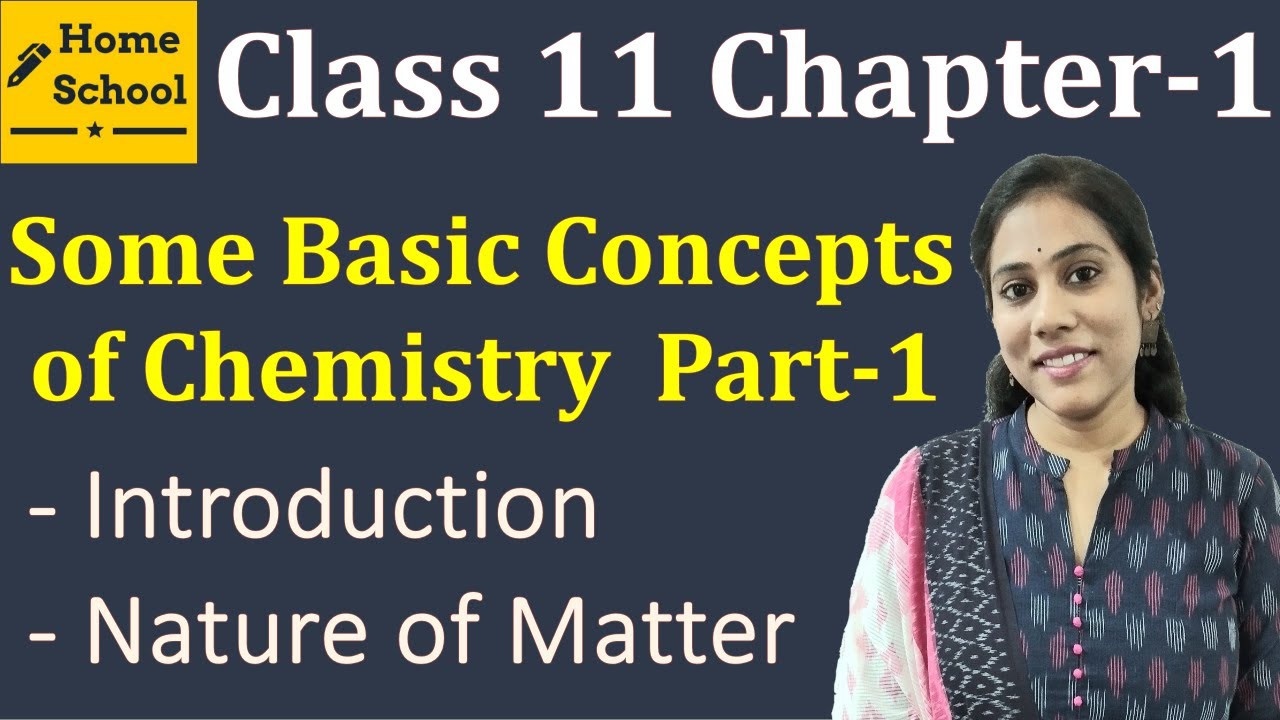General Chemistry 1 - Matter and Its Properties
Summary
TLDRIn this introductory chemistry lesson, Jennifer Cenial outlines the fundamental concepts of matter, including its definition, properties, and classification. She distinguishes between physical and chemical properties, pure substances and mixtures, and explains the difference between elements, compounds, and their types. The lesson also covers the various states of matter and the changes they undergo, such as physical and chemical changes, providing a solid foundation for further studies in general chemistry.
Takeaways
- 📚 The course is an introduction to General Chemistry with Jennifer Cenial as the teacher.
- 🔍 The lesson starts with defining matter and its properties, which is a recap from junior high school science.
- 🌐 Matter is defined as anything that occupies space and has mass, distinguishing mass from weight where mass is the amount of substance and weight is the pull towards Earth's center.
- 📏 Matter has physical and chemical properties; physical properties can be observed without changing the substance, while chemical properties require a change in the substance's type.
- 🔑 Properties are also classified as extensive (dependent on the amount of matter) and intensive (dependent on the type of matter), with examples like boiling points and viscosity.
- 🧪 Pure substances have a definite composition and unique properties, and they can be elements (simplest form of substance) or compounds (made of molecules with two or more kinds of atoms).
- 🔬 Compounds can be ionic, covalent, or metallic, with different bonding mechanisms, and are further classified as organic (containing carbon) or inorganic (other elements).
- 🍋 Organic compounds include acids, bases, salts, and oxides, each with distinct properties and examples provided in the script.
- 🧴 Mixtures consist of two or more substances and can be homogeneous (uniform appearance) or heterogeneous (distinct portions with different properties).
- 🌀 Mixtures are also classified by particle size into solutions, colloids, gels, aerosols, emulsions, foams, and suspensions, each with a different dispersing phase and dispersion medium.
- 🔄 Changes in matter include physical changes (changes in physical properties without altering chemical composition) and chemical changes (permanent changes with new products and mass alteration).
- 🌡 States of matter discussed are solid, liquid, gas, and plasma, with plasma being less common on Earth but prevalent in space.
Q & A
What is the definition of matter according to the script?
-Matter is defined as anything that occupies space and has mass.
What is the difference between mass and weight as explained in the script?
-Mass refers to the amount of substance, while weight refers to the downward pull of an object towards the center of the Earth.
What are the two types of properties of matter mentioned in the script?
-The two types of properties of matter are physical properties and chemical properties.
How are physical properties different from chemical properties?
-Physical properties can be observed and measured without changing the substance, whereas chemical properties can only be observed by changing the type of the substance.
What are the examples of intensive properties given in the script?
-Examples of intensive properties include boiling points, freezing points, melting points, solubility, malleability, and viscosity.
What are pure substances and what are their characteristics?
-Pure substances possess a definite, fixed, and invariant composition with a unique set of properties, and they are made up of only one kind of matter.
What are the two classifications of pure substances mentioned in the script?
-The two classifications of pure substances are elements and compounds.
How are compounds different from elements?
-Compounds are substances made up of molecules with two or more kinds of atoms in definite proportions, whereas elements are the simplest form of substances that cannot be decomposed by simple chemical means.
What are the three types of chemical bonds mentioned in the script?
-The three types of chemical bonds mentioned are ionic, covalent, and metallic.
What is the difference between organic and inorganic compounds?
-Organic compounds contain carbon and are classified as organic, while compounds without carbon are classified as inorganic.
What are the two classifications of matter mentioned in the script?
-The two classifications of matter mentioned are pure substances and mixtures.
What are the two types of mixtures based on appearance?
-The two types of mixtures based on appearance are homogeneous and heterogeneous mixtures.
What are the four states of matter discussed in the script?
-The four states of matter discussed are solid, liquid, gas, and plasma.
What is the difference between a physical change and a chemical change?
-A physical change involves changes in physical properties without altering the chemical composition of the substance, is reversible, and does not result in a change in mass. A chemical change involves a change in the chemical composition of the substance, results in the formation of new products, is permanent, and often involves a change in mass.
What are the examples of physical changes given in the script?
-Examples of physical changes include evaporation, condensation, melting, freezing, sublimation, and deposition.
What are the examples of chemical changes given in the script?
-Examples of chemical changes include burning, rusting, curdling, rancidification, digestion, photosynthesis, cooking, and fermentation.
Outlines

Этот раздел доступен только подписчикам платных тарифов. Пожалуйста, перейдите на платный тариф для доступа.
Перейти на платный тарифMindmap

Этот раздел доступен только подписчикам платных тарифов. Пожалуйста, перейдите на платный тариф для доступа.
Перейти на платный тарифKeywords

Этот раздел доступен только подписчикам платных тарифов. Пожалуйста, перейдите на платный тариф для доступа.
Перейти на платный тарифHighlights

Этот раздел доступен только подписчикам платных тарифов. Пожалуйста, перейдите на платный тариф для доступа.
Перейти на платный тарифTranscripts

Этот раздел доступен только подписчикам платных тарифов. Пожалуйста, перейдите на платный тариф для доступа.
Перейти на платный тарифПосмотреть больше похожих видео
5.0 / 5 (0 votes)






